Showing Spotlights 233 - 240 of 556 in category All (newest first):
 Researchers have explored the use of curcumin nanoparticles for the treatment of infected burn wounds, an application that resulted in reduced bacterial load and enhancing wound healing. Adding to the excitement regarding curcumin in multiple fields of medicine, most prominently in oncology, these new findings demonstrat that curcumin nanoparticles were more effective at both accelerating thermal burn wound closure and clearing infection with Methicillin Resistant S. aureus (MRSA) as compared to curcumin in its bulk size.
Researchers have explored the use of curcumin nanoparticles for the treatment of infected burn wounds, an application that resulted in reduced bacterial load and enhancing wound healing. Adding to the excitement regarding curcumin in multiple fields of medicine, most prominently in oncology, these new findings demonstrat that curcumin nanoparticles were more effective at both accelerating thermal burn wound closure and clearing infection with Methicillin Resistant S. aureus (MRSA) as compared to curcumin in its bulk size.
Sep 22nd, 2014
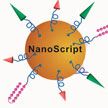 Gene transcription is tightly regulated by proteins called transcription factors. These transcription factor (TF) proteins are master regulators of transcriptional activity and gene expression. Transcription factors are responsible for transcribing the correct genes and therefore for producing the right quantity of proteins. TF-based gene regulation is a promising approach for many biological applications, however, several limitations hinder the full potential of TFs. To overcome these problems, an international team of researchers has developed an artificial, nanoparticle-based transcription factor, termed NanoScript, which is designed to mimic the structure and function of TFs.
Gene transcription is tightly regulated by proteins called transcription factors. These transcription factor (TF) proteins are master regulators of transcriptional activity and gene expression. Transcription factors are responsible for transcribing the correct genes and therefore for producing the right quantity of proteins. TF-based gene regulation is a promising approach for many biological applications, however, several limitations hinder the full potential of TFs. To overcome these problems, an international team of researchers has developed an artificial, nanoparticle-based transcription factor, termed NanoScript, which is designed to mimic the structure and function of TFs.
Aug 28th, 2014
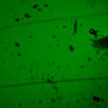 Researchers have demonstrated an active glucose-responsive self-powered fluidic pump based on transesterification reaction of acyclic diol boronate with glucose. The scientific principle of the project is to use well-known glucose/boronate chemistry to design a self-powered micropump device. Instead of synthesizing some new molecules with glucose/boronate reaction, a miniature pump utilizes the energy of this chemical reaction and pumps drugs when glucose levels are high.
Researchers have demonstrated an active glucose-responsive self-powered fluidic pump based on transesterification reaction of acyclic diol boronate with glucose. The scientific principle of the project is to use well-known glucose/boronate chemistry to design a self-powered micropump device. Instead of synthesizing some new molecules with glucose/boronate reaction, a miniature pump utilizes the energy of this chemical reaction and pumps drugs when glucose levels are high.
Aug 19th, 2014
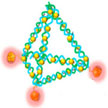 One way to eliminate the toxicity issue of synthetic nanomaterials used in nanomedicine is by working with truly biocompatible natural carriers for sensing and drug delivery applications. The emerging field of DNA nanotechnology may provide a solution. In new work, researchers have developed a novel theranostic platform which is made by utilizing a self-assembled DNA nanopyramid as scaffold for incorporation of both detection and therapeutic moieties to combat bacterial infection.
One way to eliminate the toxicity issue of synthetic nanomaterials used in nanomedicine is by working with truly biocompatible natural carriers for sensing and drug delivery applications. The emerging field of DNA nanotechnology may provide a solution. In new work, researchers have developed a novel theranostic platform which is made by utilizing a self-assembled DNA nanopyramid as scaffold for incorporation of both detection and therapeutic moieties to combat bacterial infection.
Jul 11th, 2014
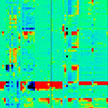 On September 15-16, 2014, come explore ways in which Alternative Testing Strategies (ATS) may be combined to create a Weight of Evidence (WOE) or 'multiple models' approach to inform context-specific decisions about risk from exposure to novel nanoscale materials. The goal is to advance a common understanding of the state of the science, early lessons, current opportunities, and next steps for developing ATS for use in decision making for nanoscale materials.
On September 15-16, 2014, come explore ways in which Alternative Testing Strategies (ATS) may be combined to create a Weight of Evidence (WOE) or 'multiple models' approach to inform context-specific decisions about risk from exposure to novel nanoscale materials. The goal is to advance a common understanding of the state of the science, early lessons, current opportunities, and next steps for developing ATS for use in decision making for nanoscale materials.
Jul 9th, 2014
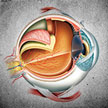 Defined as a clouding of the lens of the eye, cataracts affect more than 20 million people worldwide and accounts for 51 per cent of world blindness. In fact, this debilitating eye disease has been identified as the leading cause of blindness today. A multidisciplinary team of researchers is busy trying to understand the fundamental mechanisms of how the aggregates that cause cataracts form, and how nanotechnology may be used to prevent or at least inhibit them.
Defined as a clouding of the lens of the eye, cataracts affect more than 20 million people worldwide and accounts for 51 per cent of world blindness. In fact, this debilitating eye disease has been identified as the leading cause of blindness today. A multidisciplinary team of researchers is busy trying to understand the fundamental mechanisms of how the aggregates that cause cataracts form, and how nanotechnology may be used to prevent or at least inhibit them.
Jul 4th, 2014
 Cellular functions within living organisms are extremely complex processes and researchers have been using nanopatterned substrates to control and monitor cellular functions in order to design and fabricate nanoscale biotechnological systems. Especially stem cell research has benefitted from nanopatterned surfaces. Nevertheless, despite the intense scientific efforts to achieve precise control of stem cell fates with engineered nanopatterned substrates, reliable and cost effective control of stem cell behavior remains a challenge. Researchers have now fabricated biomimetic substrates that are similar to that of the native extracellular matrix in the epidermis which assists proliferation, differentiation, and biosynthesis of the keratinocyte (i.e. human outer skin) cells.
Cellular functions within living organisms are extremely complex processes and researchers have been using nanopatterned substrates to control and monitor cellular functions in order to design and fabricate nanoscale biotechnological systems. Especially stem cell research has benefitted from nanopatterned surfaces. Nevertheless, despite the intense scientific efforts to achieve precise control of stem cell fates with engineered nanopatterned substrates, reliable and cost effective control of stem cell behavior remains a challenge. Researchers have now fabricated biomimetic substrates that are similar to that of the native extracellular matrix in the epidermis which assists proliferation, differentiation, and biosynthesis of the keratinocyte (i.e. human outer skin) cells.
Jul 3rd, 2014
 There are a wide range of passive devices such as beads, wells and tubes that can be used to capture and confine single cells. Previous active cell grippers with moving parts have relied on electrical modalities which can be challenging to implement off-chip and in a highly parallel manner. Researchers have now, for the first time, demonstrated an untethered active microgripper that can be used to capture and contain single cells.
There are a wide range of passive devices such as beads, wells and tubes that can be used to capture and confine single cells. Previous active cell grippers with moving parts have relied on electrical modalities which can be challenging to implement off-chip and in a highly parallel manner. Researchers have now, for the first time, demonstrated an untethered active microgripper that can be used to capture and contain single cells.
Jun 25th, 2014
 Researchers have explored the use of curcumin nanoparticles for the treatment of infected burn wounds, an application that resulted in reduced bacterial load and enhancing wound healing. Adding to the excitement regarding curcumin in multiple fields of medicine, most prominently in oncology, these new findings demonstrat that curcumin nanoparticles were more effective at both accelerating thermal burn wound closure and clearing infection with Methicillin Resistant S. aureus (MRSA) as compared to curcumin in its bulk size.
Researchers have explored the use of curcumin nanoparticles for the treatment of infected burn wounds, an application that resulted in reduced bacterial load and enhancing wound healing. Adding to the excitement regarding curcumin in multiple fields of medicine, most prominently in oncology, these new findings demonstrat that curcumin nanoparticles were more effective at both accelerating thermal burn wound closure and clearing infection with Methicillin Resistant S. aureus (MRSA) as compared to curcumin in its bulk size.

 Subscribe to our Nanotechnology Spotlight feed
Subscribe to our Nanotechnology Spotlight feed





